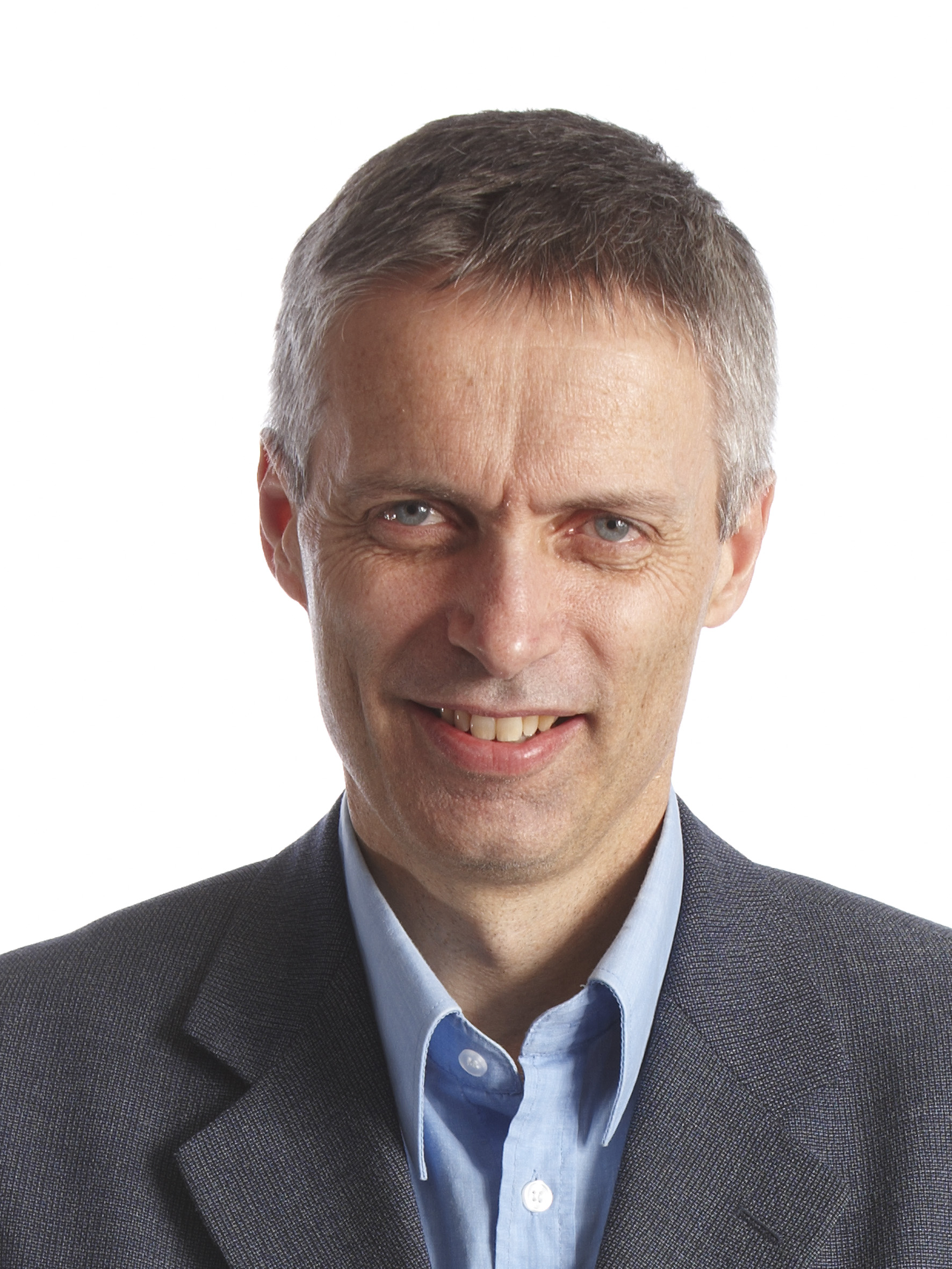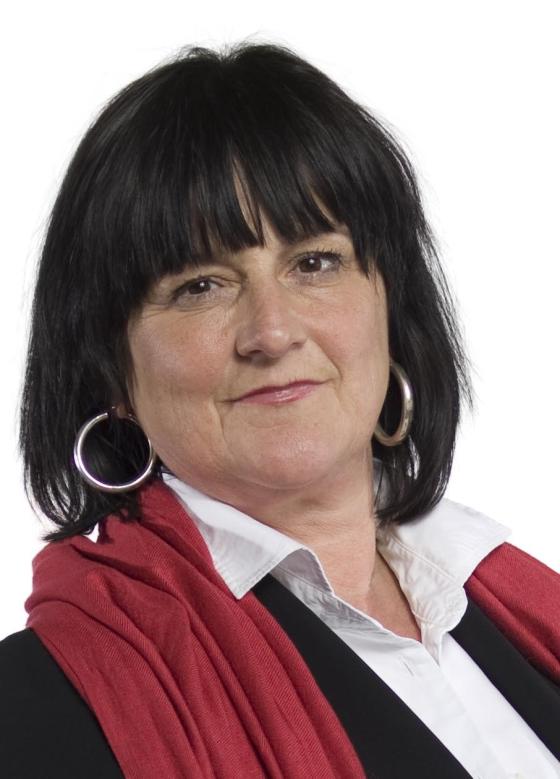Unproblematic to ask about sexual harassment
SINTEF thinks it is positive, for both the working environment and the academic sphere, to ask about sexual harassment on employee surveys.
In its employee survey from January 2012, SINTEF decided to ask explicitly about sexual harassment after one of the managers reacted to the experiences that female employees had told him about.
Director of Human Resources Ingeborg Lund thinks it is positive to document the problem and that asking about sexual harassment sends an important signal. It shows that the leadership is concerned about the employees’ well-being and takes the problem seriously.
“There is security for the employees in knowing that SINTEF stands behind them and will not tolerate sexual harassment. They know this is something we prioritize and take responsibility for. It eliminates some of the shame for those who have experienced it,” she says.
Important to gain an overview
In a series of articles on sexual harassment in the research sector, the Gender Balance in Research website has uncovered that neither the university colleges nor the universities address the issue of sexual harassment in their employee surveys. Nor is sexual harassment a topic on the new national working environment survey for universities and university colleges. The reason is that it is difficult to formulate questions that capture the problem in an effective way and that in an anonymous survey it is not possible to follow up individual cases as required under the Gender Equality Act. There is also a fear that direct questions about sexual harassment will get all the attention and that the efforts with surveys in a broader development perspective will be hampered.
This is completely the opposite of Lund’s experience.
“Previously in our working environment surveys, the question about sexual harassment was simply baked into the question about bullying. In our most recent survey we gave the issue a more prominent place and got good results,” she explains.
“What have been the results of the new question on the working environment survey?”
“We have documented the extent of the problem. It was not a large number. In the departments where sexual harassment was reported, we have followed up those cases according to our routines. I don’t find this to be problematic. We have done so in a serious manner and put the spotlight on an important problem,” says Lund.
“Must be clear”
Lund believes the structure of the research institutes may make it easier to address issues such as sexual harassment than it is for the universities and university colleges.
“Clear leadership is an advantage when addressing problems and working with development and change. At SINTEF we have worked systematically with the working environment and leadership development over a long period of time,” she says.
Lund is supported in her views by Lars Holden, chairman of the board of the Norwegian Association of Research Institutes (FFA) and Managing Director of the Norwegian Computing Centre. Holden thinks that sexual harassment is probably less of a problem at the research institutes than at the universities and university colleges. He notes that the institutes got higher scores on the large-scale survey of working conditions, the working environment and leadership in academia conducted by the Nordic Institute for Studies in Innovation, Research and Education (NIFU) (Arbeidsvilkår i norsk forskning, 2009). In addition, the research institutes do not have the same uneven balance of power that creates fertile soil for sexual harassment.
“The institutes are organized differently. At universities and university colleges many employees are dependent on other individuals, and thus they are more vulnerable than a permanent employee who has the backing of a labour union. At the institutes we have more equality due to the permanent positions and we don’t have students and temporary employees whose positions are largely dependent on a single individual. We don’t have such a wide range of ages either. At the institutes there is more mutual dependency and greater visibility because the employees work in groups,” says Holden.
He agrees with Lund that the working environment and leadership are crucial.
“The institutes have active managers who handle cases and who have responsibility that is followed up the chain of command. They also have a well-developed network of labour unions, working environment committees, senior researchers and so forth,” he says.
Also important for the academic sphere
Ingeborg Lund wonders if the reluctance of universities and university colleges to compile information about sexual harassment could originate in a reluctance to link the academic and the sexual.
“Maybe people in the weighty academic environments are a little quiet and timid. They may also lack initiative when it comes to problems that are not directly related to their scientific field,” she wonders.
She thinks that, paradoxically, the academic sphere loses out if the leaders believe they are only responsible for scientific matters.
“I attended a conference where an employee representative at a large workplace said that their leaders thought they only had academic responsibility and that they were not obliged to take care of their employees. I think this is a very old-fashioned attitude. We work very hard to develop the best working environment possible and to be a good workplace that takes care of its employees, in spite of days filled with the difficult, demanding work that research is. Our leaders know that the employees’ well-being is critical for whether or not we succeed in our endeavours,” says Lund.

Holden points out that the research institutes in FFA take the working environment very seriously. They have taken the initiative to develop a new working environment survey so that others can learn from institutes such as SINTEF which work in-depth with working environment and leadership. The Working Environment Survey in the Research Institute Sector (AMIS) was developed under the auspices of FFA and has been implemented by 10 institutes so far. This survey asks about harassment in general, but not directly about sexual harassment.
Does not overshadow
Lund emphasizes that everyone has been positive towards giving sexual harassment a more prominent place on SINTEF’s working environment survey – the employees, labour unions and leaders alike. She has not found that sexual harassment has been overdramatized or that it has overshadowed other topics on the survey. Lund is perplexed as to why it would be difficult to find a suitable way to ask about sexual harassment and why it would be impossible to follow up if it comes to light.
“Sexual harassment is a type of bullying, which is clearly defined in the working environment legislation. It consists of negative actions that occur on a repeated basis. We have also written this on the working environment survey,” she says.
SINTEF’s working environment survey asks about sexual harassment under the section on bullying. Sexual harassment is defined as “unwelcome sexual attention in a work situation”. Under this item the employees can respond whether they have been subjected to sexual harassment in the working environment, at client meetings, on business trips and in other connections.
Lund explains that they have established routines for following up information revealed in the anonymous survey:
“When sexual harassment comes to light, we have a duty to take action. We have thorough follow-up procedures around this. In departments where sexual harassment has been reported, we address it at the departmental meetings and encourage the ones who reported it to notify the department head, the employee representative, the HSE coordinator or the Department of Human Resources. They will get help there to take the case further.”
“The Norwegian Computing Centre has not had problems with sexual harassment. If it should occur, we will proceed in a similar fashion and bring the issue to the departmental meetings,” says Holden.
“If we hear about harassment, we must do something, but it depends on the situation. With 70 employees we are a much smaller institute than SINTEF, and we work closely together. The people who deal with cases like this know everyone involved,” he says.
Cannot close our eyes
SINTEF is working to increase the proportion of women among scientific employees and managers. Other preventive measures against sexual harassment include an initiative to improve the working environment and a course for managers. Although managers ask about sexual harassment during performance appraisals, Lund believes that the working environment survey has become one of the most important measures to combat sexual harassment. She does not want to discuss concrete examples of cases that have been resolved out of consideration for the employees, but she points out that the departments where sexual harassment has been uncovered have addressed the problem.
“As an employer we have a duty to address and follow up sexual harassment. Many of our scientific and client groups are male dominated, so it is especially crucial to look after the women. If we don’t ask, the person who is harassed is left alone to deal with the problem,” Lund points out.
“I hope the measures have made raising the issue of sexual harassment less taboo. There was some talk about it in connection with the survey, but it hasn’t been a huge topic of discussion at our institute. I think it will increase in importance over time, in relation to the culture of the workplace.”
She thinks developments at the institute look promising.
“We could certainly do more, but my impression is that the situation at our institute isn’t too bad. We are concerned with seeing the individual and demonstrating clear values, so we are dependent on working effectively with this. Of course it is difficult to prevent something from happening, such as when an employee meets clients on a business trip. But we work to establish a culture where a person is able to report sexual harassment, that a person does not have to accept it,” says Lund.
Translated by Connie Stultz.
The Gender Balance in Research website is putting the spotlight on sexual harassment in academia. This is the fourth in a series of articles. A link to the previous articles is available below.
SINTEF is a broadly based, multidisciplinary research institute with international expertise in the areas of technology, natural science, medicine and social science. SINTEF has 2 100 employees and associates from 68 countries, making it one of the four largest commissioned research institutes in Europe.
SINTEF’s working environment survey asks about sexual harassment under the section on bullying. The employees answer whether they have witnessed bullying/harassment in the past year or whether they have been a victim of it. Sexual harassment is defined as “unwelcome sexual attention in a work situation”. The employees can respond whether they have been subjected to sexual harassment in the working environment, in client meetings, on business trips or in another connection.
The Norwegian Computing Centre is a private, independent, non-profit foundation that conducts commissioned research for the business sector, the public sector and private organizations in Norway and abroad. Its areas of research are ICT and statistical modelling.
The Norwegian Association of Research Institutes (FFA) is a special interest organization for all research institutes that are subject to the Research Council of Norway’s policy on research institutes and that are qualified to receive basic funding. This encompasses a total of 51 research institutes with roughly 6 500 employees and an annual turnover of about NOK 7.5 billion. FFA includes the technical-industrial institutes, the environmental institutes, the social research institutes, the regional institutes and the primary industry institutes.
The Working Environment Survey in the Research Institute Sector developed under the auspices of FFA is a survey administered by the individual institutes on agreement and with assistance from the consulting firm LEAD. About 10 independent research institutes have implemented the survey so far. The survey is based on the same platform, but the questions are also customized according to the institute’s needs. This survey asks about harassment, but not explicitly about sexual harassment.
Sources: SINTEF, Norwegian Computing Centre, FFA, Abelia and LEAD
